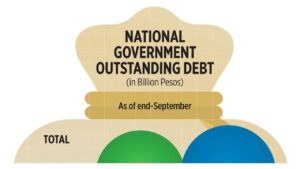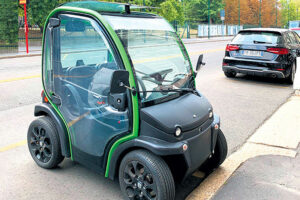Q2 economic growth disappoints
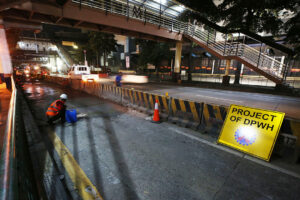
THE PHILIPPINE ECONOMY grew much slower than expected in the second quarter, dragged by elevated inflation, the lagged impact of interest rate hikes and a contraction in government spending.
Gross domestic product (GDP) expanded by an annual 4.3% in April to June, the slowest in over two years, the Philippine Statistics Authority (PSA) reported on Thursday.
It was weaker than the 6.4% growth in the first quarter and 7.5% a year ago.
It was well below the estimates of 21 economists in a BusinessWorld poll with a median forecast of 6% last week.
“For the second quarter, the moderate economic expansion was driven by increases in tourism-related spending and commercial investments, but was tempered by high commodity prices, the lagged effects of interest rate hikes, the contraction in government spending, and slower global economic growth,” National Economic and Development Authority (NEDA) Secretary Arsenio M. Balisacan told a briefing in Quezon City.
Discounting the declines recorded during the pandemic years of 2020 and 2021, the second-quarter annual growth was the slowest since the 4% growth in the fourth quarter of 2011.
For the first semester, GDP growth averaged 5.3%.
“To achieve the target growth rate of 6-7% for the year, the country’s GDP needs to grow by at least 6.6% in the second half of 2023. Notwithstanding the challenges, we believe this is still attainable,” Mr. Balisacan said.
The economy shrank by 0.9% on a quarter-on-quarter basis, a reversal of the 1% growth in the first quarter. This ended 11 straight quarters of quarterly growth and the sharpest drop since the 13.8% contraction at the start of the coronavirus pandemic in the second quarter of 2020.
GOVERNMENT SPENDING FALLSPSA data showed government spending contracted by 7.1% in April to June, a reversal of the 6.2% growth in the first quarter and 10.9% a year ago.
This was the first time state spending declined since the 4.1% drop in the second quarter of 2021. This was also the sharpest drop in over 12 years since the 15% contraction in government spending in the first quarter of 2011.
Mr. Balisacan attributed the drop in government expenditures to the absence of election-related spending.
“Government spending will accelerate in the coming quarters to allow us to recover our growth momentum,” he said.
Mr. Balisacan told lawmakers later on Thursday that the second-quarter GDP growth would have been higher if there was no underspending. “If the programmed amount would have been spent then GDP would not have been 4.3% but 5.6%,” he said.
Private consumption, which historically accounts for three-fourths of the Philippine economy, increased by 5.5%. This was weaker than the 6.4% growth in the first quarter and 8.5% a year earlier.
This was the slowest pace of household spending growth since the 4.8% contraction in the first quarter of 2021.
Gross capital formation — the investment component of the economy — dipped by 0.04%, ending eight straight quarters of growth. This was a reversal of the 12.6% growth in the first quarter and 17.2% in the second quarter of 2022.
Mr. Balisacan said the second-quarter GDP data reflected the lagged effects of the Bangko Sentral ng Pilipinas’ (BSP) aggressive monetary tightening cycle that began in May 2022.
“The lagged effects of the uptick in interest rates last year and early this year, we’re feeling that now, especially in investment and household consumption. People postponed their spending,” he said.
To tame inflation, the BSP raised borrowing costs by 425 basis points (bps) from May 2022 to March 2023, bringing the key interest rate to a near 16-year high of 6.25%.
Inflation has been on a downtrend since peaking at 8.7% in January. Headline inflation slowed for a sixth straight month to 4.7% in July, bringing the seven-month average to 6.8%.
“With the easing of inflation and we continue to aggressively ensure that the deceleration will continue, then the pressure for BSP to increase further interest rates will be eased,” Mr. Balisacan said.
Exports of goods and services grew by 4.1% in the second quarter, faster than the 1% growth in the previous quarter but slower than 4.9% a year earlier.
Imports inched up by 0.4% in April to June from 4.7% in the first quarter and 14.5% a year ago.
Net primary income from the rest of the world surged by 90.6%, higher than 82.4% in the first quarter and 66.8% a year earlier.
Gross national income, the sum of the country’s GDP and net income received from overseas, expanded by 8.6%, slower than 10% in the first quarter and 9.4% a year ago.
Among major economic sectors, services expanded by 6%, weaker than the 8.4% a quarter earlier and 9.2% a year ago.
Agriculture growth slowed to 0.2%, from 2.2% in the first quarter and matched the pace a year earlier.
The industry sector expanded by 2.1%, slowing from 4% in the previous quarter and 6.3% in the same period a year ago.
Services made the largest contribution to GDP growth with 3.7 percentage points, followed by industry (0.6 point) and agriculture (0.01 point).
Mr. Balisacan said the economy is more resilient and could withstand both external and domestic headwinds.
“We firmly believe that the prospects of the Philippine economy remain strong and positive,” he said.
GLOOMY OUTLOOKWith the weaker-than-expected second-quarter growth, analysts said it is unlikely for the Philippines to achieve its 6-7% growth target this year.
“We expect continued weakness in the near term as elevated interest rates and weak global demand weigh on the economy,” Gareth Leather, senior Asia economist at Capital Economics, said in a note.
He revised the full-year GDP growth forecast to 4.5% from 5.5%, as he expects consumption and investment to remain muted.
“Higher borrowing costs and uncertainty about demand prospects are likely to curtail investment activity in the near term,” Mr. Leather said.
ING Bank N.V. Manila Senior Economist Nicholas Antonio T. Mapa said the latest GDP data were disappointing as the slowdown was evident in all major sectors.
“This was the slowest pace of expansion since 2011, with growth momentum slowing due to a challenging global landscape, price pressures, lackluster fiscal stimulus and elevated borrowing costs,” he said in a note.
ANZ Research economist Debalika Sarkar said private consumption is expected to further slow as rates remain high and pent-up demand continues to fade.
“Moreover, the uncertainty in the agricultural sector due to weather-related shocks could put nearly 22% of employees at risk of unemployment/underemployment. This scenario implies fiscal policy will need to be expansionary in the coming quarters,” she said in a note.
China Banking Corp. Chief Economist Domini S. Velasquez said the full-year target is unlikely to be achieved “unless we see a sudden reversal in spending and improvements in investments.”
In a note, HSBC Global Research ASEAN economist Aris Dacanay said growth would likely remain weak in the second half due to subdued global demand. He forecasts 5.3% GDP growth for 2023.
“We expect households to rein in consumption as they begin building their savings back up after three years of dipping into their savings,” he said in an e-mail. — Mariedel Irish U. Catilogo

